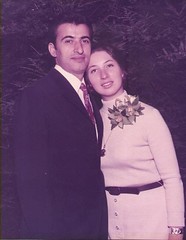Click for credits
My dear friend Walter gave me Cinema of Obsession[1] as a present.
- Cinema of Obsession traces the history of obsessive love and erotic fixation. Seminal works of obsession, The Blue Angel, Peter Ibbetson, and Phantom of the Opera are seen as setting the groundwork for films that follow. The book defines and surveys examples of the explosive nature of amour fou, issues of male control (no matter how tenuous), and the fugitive couple – love on the run – in such films as Romeo and Juliet, Last Tango in Paris, Vertigo, Basic Instinct, and Wild at Heart. Male masochism is explored through film noirs, including Criss Cross, The Killers, Gilda, and The Postman Always Rings Twice. The book shifts gears in its finale and concentrates on the female gaze, films of female obsession: Jane Eyre, The Piano, The Lover, Fatal Attraction, and Vanilla Sky.
The introduction to the book mentions new (to me) theoretical work on love and fetishism. First there is Max Dessoir (pseudonym Ludwig Brunn) and a 1888 essay entitled “The Fetichism of Love,” from which comes this clever quote:
- “Normal love appears to us as a symphony of tones of all kinds. It is roused by the most varied agencies. It is, so to speak, polytheistic. Fetichism recognises only the tone-colour of a single instrument; it issues forth from a single motive; it is monotheistic.”
“Fetichism of Love” reprises the final two chapters of Alfred Binet‘s “Du Fétichisme dans l’amour” published the previous year, which is generally regarded as the first work on sexual fetishism.
The book also references Denis de Rougemont‘s L’Amour et l’Occident (1939, revised 1972), translated as Love in the Western World as well as the standard work in this category, Georges Bataille‘s Erotism.
From that last book.
- “eroticism differs from animal sexuality in that human sexuality is limited by taboos and the domain of eroticism is that of the transgression of these taboos.”
The phrase that inspired this post and above all the photo above is “normal love“.

